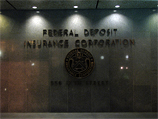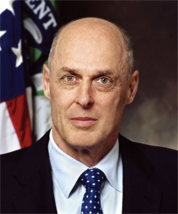The FDIC is going to make two changes to their coverage. One affects beneficiaries and one affects trust accounts, according to a bank insider who participated in teleconference call the FDIC held banks this morning as a refresher course on FDIC coverage. The big news is that the “qualifying beneficiary” rule is gone. Here’s the specifics:
fdic

Now That The Largest Bank Failure In U.S. History Is Over, Is Wachovia Next?
The collapse of Washington Mutual and the FDIC-engineered fire sale to JPMorgan Chase has people worried — about Wachovia. Wachovia’s stock is down 45% for the week, and 27% today as bailout talks stalled in Washington and WaMu held a garage sale at the FDIC.
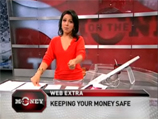
WaMu Direct Deposit Customers: Print Your Statements
For Washington Mutual direct deposit customers, to protect yourself no matter who takes over and how good they are at handling WaMu’s computer systems, Carmen Wong Ulrich, host of CNBC’s personal finance show “On The Money,” wants you to hit Print. When that direct deposit hits your account, she wants you to go to your WaMu online banking account and make a printout of your statement. That way if it somehow gets lost in the shuffle, “go right up to the bank with your paperwork.” It would probably get eventually sorted out anyway, but this way can help expedite things, just in case.

Nobody Gave A Crap About The FDIC Until Fairly Recently
Spend a little time looking at Google trends and you’ll notice that no one really gave a crap about the FDIC until fairly recently.
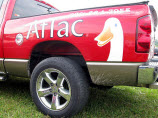
What Types Of Accounts Are FDIC Insured? Are My Investments Safe?
What accounts are FDIC-insured? Which aren’t? Now that a fund that markets itself as the world’s “first and longest running money fund,” suddenly found itself in the nearly unprecedented position of having to “break the buck,” we thought we’d help clarify. Here we go:
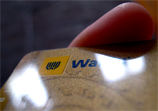
Don't Start Yanking Your WaMu Accounts
The scary headlines about WaMu’s stock slide have a few readers worrying if now is the time to pull their deposits. I’m a WaMu customer myself and I say no. For now, though I could be wrong, this just looks like more hot panic sweeping the market. First off, you’re FDIC-insured up to the first $100,000. You will get your money. Secondly…

If Enough Banks Fail, The FDIC Could Run Out Of Money
Everyone knows that your money is safe in an FDIC insured bank because if the bank fails (Hello, IndyMac!) the FDIC will step in and repay your money (generally, up to $100,000.) But what if the FDIC runs out of money? It doesn’t have an unlimited supply and enough bank failures could completely drain its fund, says ABCNews:
../../../..//2008/08/27/fdic-chairs-assessment-of-the/
FDIC chair’s assessment of the banking situation: worse and getting worser. [NYT]
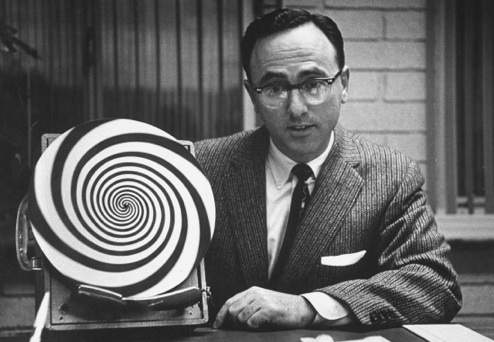
Your Bank Is Dead. Quick, Call The Hypnotist!
Gramps could go any minute, but banks only fail on Fridays, giving the FDIC carcass crew plenty of time to line up potential buyers, scrap outdated letterhead, and hire hypnotists to help bank employees remember vault codes…

If My Bank Collapses, How Long Before The FDIC Pays Up?
If your FDIC-insured bank implodes, how long does it take for the FDIC to start paying depositors? Ever since IndyMac imploded, the question has no doubt been on many people’s minds. One reader emailed me saying that he had asked the his banker about how long it might take. Allegedly, the banker squirmed around before finally saying that the FDIC had 20 years to pay people back. This is not true.
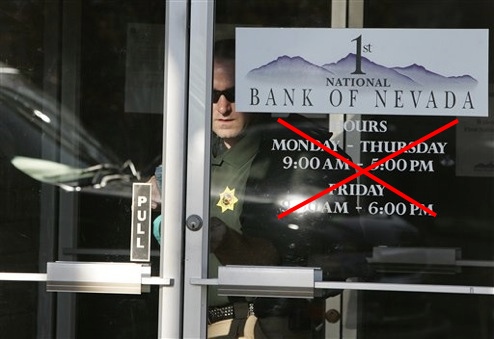
Two More Banks Fail, Including The Largest Arizona-Based Bank
Yesterday the FDIC shuttered the 28 branches of the First National Bank of Nevada and the First Heritage Bank. Federal regulators will perform a nifty little magic trick over the weekend, and on Monday, the branches will reopen as Mutual of Omaha Bank. Aren’t bank failures fun?!

Help! How Can I Make Sure My Money Is Covered By The FDIC!?
The FDIC says there were over a billion dollars in assets at IndyMac that were not covered by the FDIC. Why not?
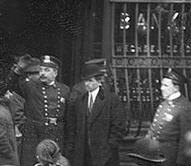
What Does A Bank Run Look Like In 2008? A Lot Like 1912.
The FDIC was created in 1933 by the Glass-Steagall Act, and provides $100,000 of deposit insurance to checking and savings deposits. “Bank panics” used to be fairly common, and the FDIC was intended to instill confidence in the banking system after the Great Depression. The most recent big failure, that of California bank IndyMac, will cost the FDIC between $4 and $8 billion, and they estimate that about $1 billion of IndyMac’s deposits are “potentially uninsured,” meaning that the depositors had more than $100,000 on deposit. So what does a bank run look like these days?

IndyMac Failure Demonstrates That The FDIC's Customer Service Skills Could Use Some Work
We’re always told not to worry about our bank failing because our deposits are insured up to $100,000 by the FDIC. Well, in case you were wondering what happens when a bank actually does fail, look no further than the great state of California, where IndyMac has been taken over by federal regulators and its customers are getting a taste of all the FDIC has to offer.

Regulators Seize IndyMac In The Second Largest Bank Failure In U.S. History
Ever hear of IndyMac Bancorp? Well, it’s gone! Federal regulators seized the California bank spawned by Countrywide founder Angelo Mozilowhich, which had giddily doled out mortgages to lenders without requiring proof of income. Rather than blame the second largest bank failure in U.S. history on the subprime meltdown, the charmingly politicized regulators at the FDIC blamed the bank’s demise on Senator Charles Schumer (D-NY). Huh?

Treasury Secretary Calls For Supercharged Fed, Streamlined Regulatory System
Treasury Secretary Henry Paulson wants to consolidate the nation’s financial regulators into a tripartite gang that can save the economy from distress and doom. The plan to give the Federal Reserve broad new regulatory powers and streamline the regulatory community has been in the works since last March, before the start of the subprime meltdown. Paulson is worried that the U.S. markets are no longer competitive with maturing world markets, some of which aren’t hampered by nuisances like regulation. After the jump we’ll explain the consumer impact of the plan and introduce you to your three new regulators.


